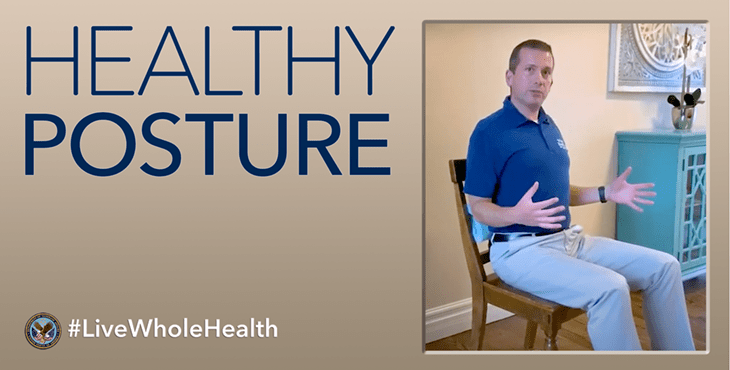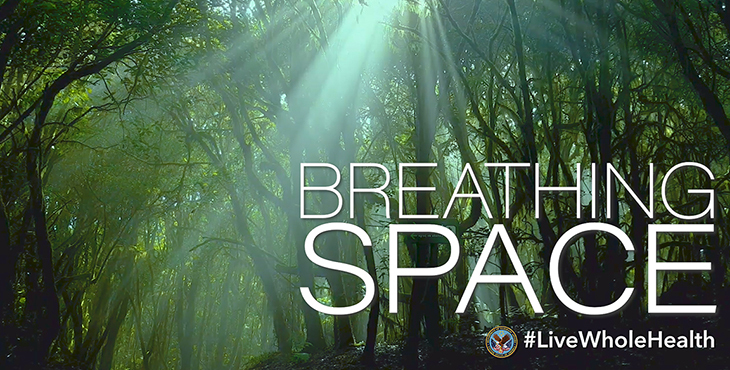Our posture – how we sit or stand, can make a difference in how we feel. Sound strange? Let’s try a little exercise.
Sitting where you are, slouch over, let your head hang, maybe even try furrowing your brow. Clench your jaw and fists. Take note of how you feel physically, mentally, and emotionally. How does it feel to breathe in this posture? Now, start to sit up a little taller, straighter, prouder. Let your shoulders release down away from your ears. Imagine growing even just a little taller. Release your jaw and maybe even move your lower jaw from side to side and then let a little smile come across your face. Take note of how you feel physically, mentally, and emotionally as you sit up in this posture. How does it feel to breathe in this posture?
Good posture and proper body alignment can help reduce pain by preventing or decreasing strain on your spine, muscles, and joints. Proper alignment can help with balance when walking, with proper form while exercising, getting up and down from a chair, carrying objects, going up and down stairs, and can even help you feel more confident and boost your mood!
Keep this quote in mind, “Where the mind (or body) goes energy flows.”
So, what contributes to poor posture, and what can we do about it? In some cases, tight, shortened, or weak muscles can negatively impact our posture and mobility. For example, tight chest muscles and weak upper back muscles can pull your shoulders forward, while weak core muscles can contribute to slouching. We need all these muscles to help hold ourselves up.
The good news is there are many ways we can improve our posture and mobility, and these exercises do not require a lot of fancy equipment or a gym. Simple stretches can help with the tight muscles and mobility. Strengthening exercises can help build the muscles needed to support our alignment and posture. It is important to find ways throughout the day to move our bodies to increase our energy and help keep us strong and mobile. Exercises and movement can be done in a chair if that is more comfortable. Finding movement that you enjoy can help motivate you to do it.
Movement and exercise can help manage chronic conditions, increase your stamina, strength, mobility, balance, flexibility, and as discussed here, your posture. Listening to our body is important for any movement exercise. Reflecting and bringing awareness to your body before, during, and after movement activities can help prevent injury.
Follow along with Whole Health Chiropractic Physician Dr. Jason Napuli from the St. Louis VA while he talks about healthy posture and the “rule of 90’s.” Dr. Napuli also shares some quick stretches you can do from home throughout the day.
More information
For more information on the importance of physical activity visit the National Center for Health Promotion and Disease Preventions Healthy Living Message page: https://www.prevention.va.gov/Healthy_Living/Be_Physically_Active.asp
Looking for information on stretches you can do at home? Check out the Physical Therapy section of the Veterans Health Library: https://www.veteranshealthlibrary.va.gov/rehab/PhysicalTherapy/
To further explore the self-care component of “Moving the Body” visit: https://www.va.gov/WHOLEHEALTH/circle-of-health/moving-body.asp
Alison M. Whitehead, MPH, C-IAYT is the Acting Director for the Integrative Health Coordinating Center in the VHA Office of Patient Centered Care and Cultural Transformation.
Topics in this story
More Stories
Rumi’s "The Guest House" invites us to welcome each emotion as a teacher, even the unexpected ones. Listen and reflect for this week's #LiveWholeHealth practice.
Your breath is the most loyal friend you've always had. Connect, calm and heal with mindful breathing in this week's #LiveWholeHealth practice.
Gratitude is a light that shines through life’s ups and downs. Embrace gratitude this holiday season in just five minutes for this week's #LiveWholeHealth practice.






